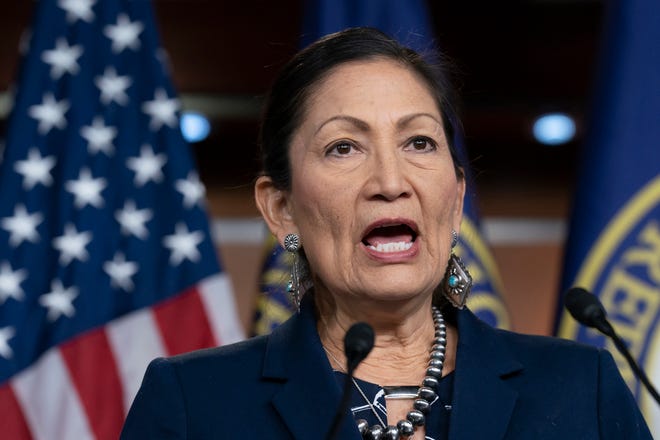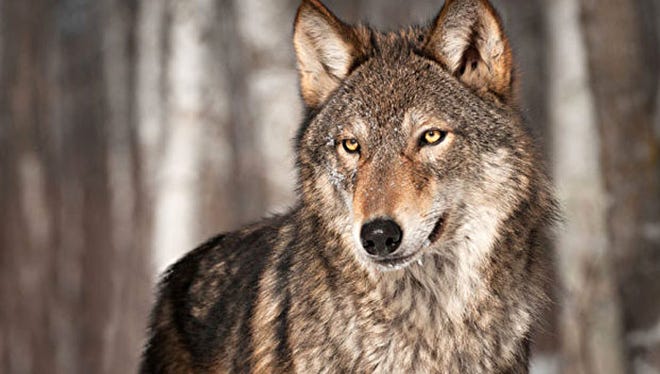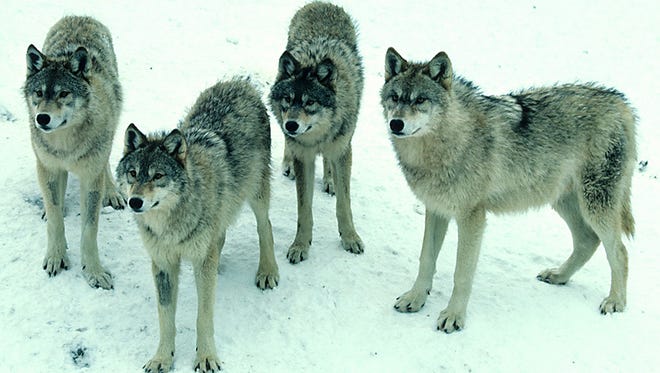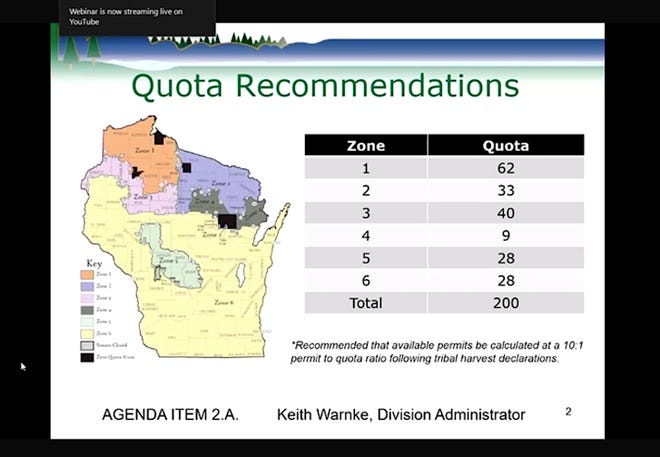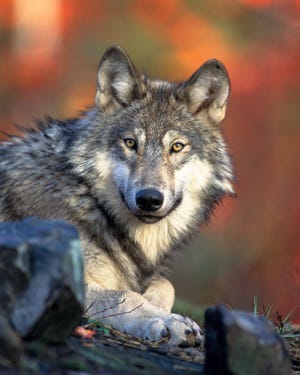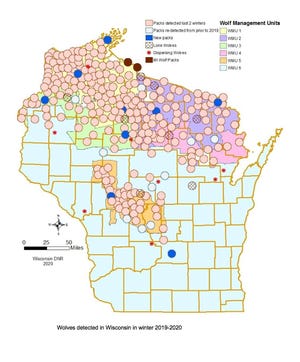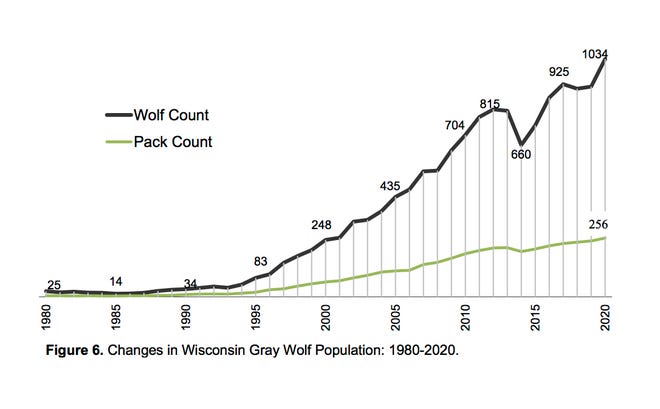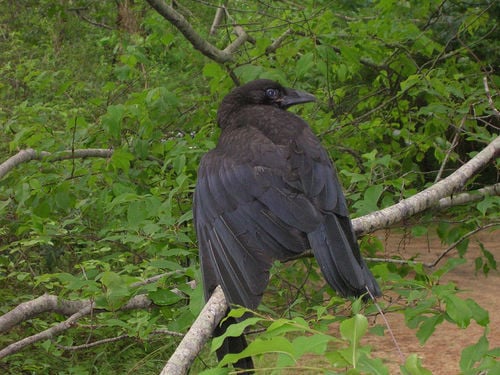Biden administration mum on gray wolves endangered species listing (ktvq.com)
![items.[0].image.alt](https://ewscripps.brightspotcdn.com/dims4/default/41c0da1/2147483647/strip/true/crop/5880x3308+0+306/resize/1280x720!/quality/90/?url=http%3A%2F%2Fewscripps-brightspot.s3.amazonaws.com%2Fa2%2Ff1%2Ff60ebddb4f348213634ade885299%2Fwolf.jpg)
Photo by: National Park Service via AP, FileFILE – In this March 21, 2019, aerial file photo provided by the National Park Service, is the Junction Butte wolf pack in Yellowstone National Park.By: Jacob Fischler – Daily MontananPosted at 8:51 AM, Apr 05, 2021 and last updated 7:51 AM, Apr 05, 2021
A controversial decision in the last months of the Trump administration to remove gray wolves from the endangered species list led to a massive overhunt in Wisconsin this year that Ojibwe tribal representatives said disrespected their wishes.
But there’s no indication yet that the Biden administration will attempt to roll back that move, despite an order the day President Joe Biden took office that departments across the government review decisions from the previous four years that were “damaging to the environment, unsupported by the best available science, or otherwise not in the national interest.” The order specifically cited the gray wolf delisting as one to reconsider.
It’s also unclear what effect the three-day hunting season in Wisconsin, where hunters killed nearly double the state’s non-tribal quota, will have on other states.
The season was held in late February after a Nov. 3 Fish and Wildlife Service order removed gray wolves from the endangered species list in all of the lower 48 states, mostly affecting the Great Lakes region. Wolves in the Northern Rocky Mountains had already been delisted federally.
A Wisconsin judge ruled in February that state law required a wolf hunting season. The state set a limit of 119 wolves that could be harvested by the general public, with an additional 81 reserved for the Ojibwe tribes.
The tribes intended not to harvest wolves, but to use their quota as a means for conservation, said Dylan Jennings, a spokesman for the Great Lakes Indian Fish and Wildlife Commission, a group that represents 11 Ojibwe tribes in Wisconsin, Minnesota and Michigan.https://85a9b590766c8489fb86c7a4c79aed8b.safeframe.googlesyndication.com/safeframe/1-0-38/html/container.html
Hunters killed 216 in just three days.
“The second it gets beyond a certain threshold, there’s a quick and irrational desire to hunt them again,” Jennings said.
Jennings’ group opposed the hunt because of biological factors and because of the reverence for wolves in Ojibwe culture.
The animal’s fate is seen as tied to the Ojibwe people, and they view policies throughout U.S. history where the government has sought to remove both Native Americans and wolves as strengthening that shared existence, Jennings said.
“What happens to one happens to the other,” he said. “There’s a mirror prophecy…. And that mirrored history is pretty fresh in the minds of a lot of our tribal nations.”
Although the state was forced by the court decision to hold a hunting season, Jennings said tribes were not meaningfully consulted.
“When you’re pushing for a hunt to happen in a week’s time, you’re essentially saying ‘We’re going to bypass the tribal consultation process,’” Jennings said. “And that’s exactly what tribal communities viewed as happening.”
The timing of Wisconsin’s hunt, when females may be pregnant and wolf pelts are not as valuable, added a layer of disrespect, the group said in a statement before the season opened.
Representatives for the Wisconsin Department of Natural Resources did not return messages seeking comment Friday.
Managing large carnivores
Government management of large carnivores like wolves is often controversial. The animals can pose a danger to people, livestock and the livelihoods of ranchers.
“Wolves are strong, smart and vicious predators,” Luke Hilgemann, the CEO of Hunter Nation, the organization that sued the state to force a wolf season, wrote in a March 19 op-ed for the Wisconsin State Journal. “Wolves are to be respected and revered. But too many of any species — particularly predators — can wreck the entire ecosystem.”
In neighboring Minnesota, wolf populations have remained strong since before the animal was listed on the federal endangered species list, said Dan Stark, a large carnivore specialist with the Minnesota Department of Natural Resources. The population has hovered around 2,700 for the past three years, about double the 1,250-1,400 goal that federal authorities set.
Stark said he didn’t have enough information about the Wisconsin season to speculate about how it might affect Minnesota’s management plan, but that examples from across North America, including Wisconsin’s, helped inform best practices for wolf hunting.https://85a9b590766c8489fb86c7a4c79aed8b.safeframe.googlesyndication.com/safeframe/1-0-38/html/container.html
“Anything we can learn about what methods were allowed or what steps were taken to manage and provide the controls for that season closure could help inform us as we develop or if we adopt a proposal for a season,” he said.
Minnesota DNR policymaking committees include tribal members and formal tribal consultation is also part of the process, as is consultation with people concerned about wolves preying on livestock, Stark said.
The department’s review of its wolf management policy was slowed by the pandemic, Stark said. A review committee would likely have a plan ready for public review in the summer and a final recommendation in the fall.
Jennings said there was no indication of how the federal government might act. Interior Secretary Deb Haaland is the first Native American person to hold that office, but tribal communities understand her job goes beyond their concerns, Jennings said.
Other than citing the gray wolf in the executive order, the Biden administration has not given any other sign it intends to undo the delisting, which could be a lengthy process.
“The administration cannot simply yank back the rule,” said Kristin Boyles, a staff attorney with Earthjustice, an environmental group suing the federal government over the delisting.https://85a9b590766c8489fb86c7a4c79aed8b.safeframe.googlesyndication.com/safeframe/1-0-38/html/container.html
If the agency agreed the rule was invalid, it could begin a new rulemaking process to put the gray wolf back on the list, she said.
The government’s answer to the Earthjustice suit is due April 19.
A spokeswoman for the Fish and Wildlife Service declined to comment. A spokesman for the Interior Department did not return a request for comment.
The Fish and Wildlife Service kept the grizzly bear, another well-known large and potentially dangerous mammal, on the endangered species list, the service announced this week.
Wolf hunting in Montana
In Montana, where wolf hunting has been legal since a 2011 law authored by Sen. Jon Tester and Rep. Mike Simpson, R-Idaho, the state Legislature has pursued measures to expand hunting.
The Montana Wildlife Federation, which supported the 2011 law, has asked Gov. Greg Gianforte, a Republican, to veto seven bills. The proposals include measures to allow the use of spotlights in hunts, baits near traps, the killing of more than one wolf with a single license, and other measures conservationists consider unethical.https://85a9b590766c8489fb86c7a4c79aed8b.safeframe.googlesyndication.com/safeframe/1-0-38/html/container.html
“What we’re seeing this session is an all-out war against wolves,” Nick Gevock, the conservation director for MWF, said. “We support ethical wolf hunting, but this is something different. This is a purposeful effort to drive their numbers to a bare minimum.”
Gilles Stockton, the president of the Montana Cattlemen’s Association, said the state’s official tally of around 870 wolves is likely an undercount. The animals are overpopulated throughout the state and are a threat to livestock producers, he said. Hunting is an important tool in managing that threat, he added.
The group didn’t have a position on the specific bills the Legislature has passed, but said “more aggressive methods are necessary and should be allowed.”
Many in western Montana, where wolf populations are more plentiful, have advocated for similar measures for years, Gevock said. But with the state now led by a Republican governor after 16 years of Democratic control, the chances of enactment are greater.
Gevock said the governor’s office has not said if it will veto the bills.
State authorities fined Gianforte earlier this month for killing a wolf without first taking the proper training course.

